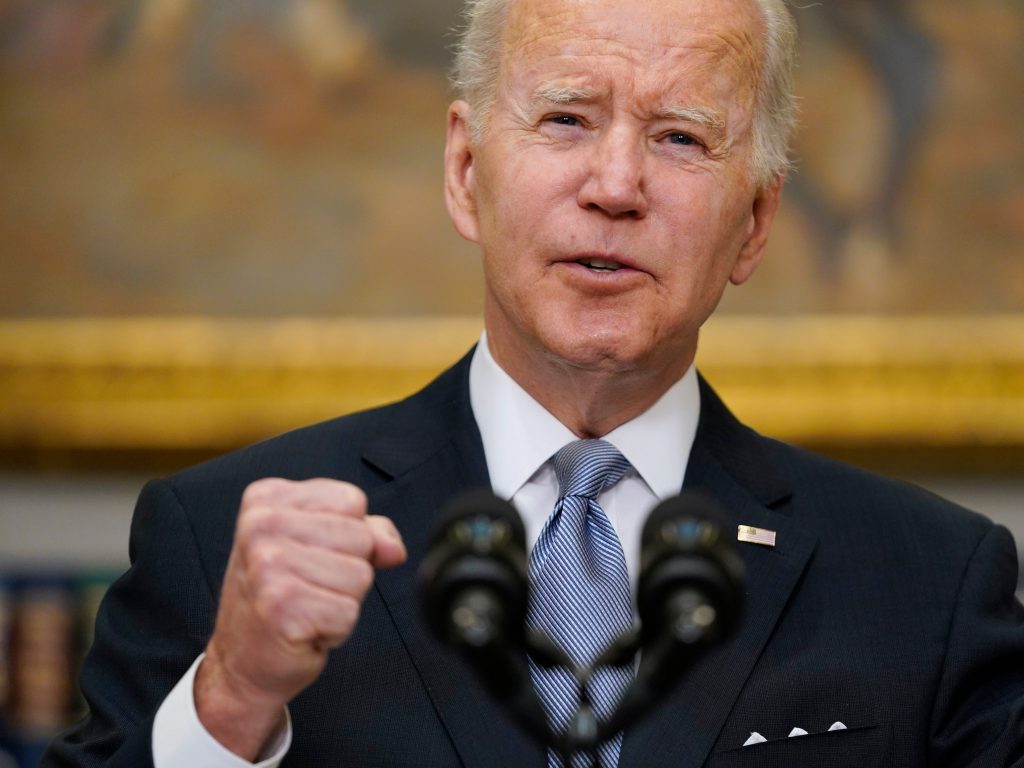- On Wednesday, President Joe Biden announced student loan debt relief for millions of Americans.
- Public servants, millennials, and Black borrowers are among the groups with the most to celebrate.
- Even future students could have an easier time paying off their student loans.
Many low-to-middle income Americans with federal student loans can breathe a bit easier after the Biden administration's Wednesday announcement on student debt relief. But some groups in particular have a reason to celebrate.
On Wednesday, President Joe Biden announced the cancellation of up to $20,000 in federal student loan debt for borrowers making less than $125,000 a year or $250,000 for married couples. The plan is expected to help many of the over 40 million Americans with student loans and completely wipe out the balances of as many as 15 million borrowers.
Among the over 40 million receiving relief, Pell Grant recipients, public servants, millennials, Black borrowers, and even future students could stand to benefit most from the administration's announcement and accompanying proposals.
About 27 million Pell Grant recipients are getting up to $20,000 in forgiveness
Eligible federal student loan borrowers making under $125,000 per year will see their loan balances cut by up to $10,000 for those who aren't Pell Grant recipients. Pell Grant recipients, however, which account for over 60% of federal loan borrowers, could receive up to $20,000 in debt cancellation. Pell Grants are a form of federal financial aid that are intended to help low-income students afford a college education.
Per the White House's fact sheet, Pell Grants once covered almost 80% of the tuition for a four-year public university, but now only cover a third of the cost. The administration is seeking to help these borrowers, around two-thirds of whom come from families with incomes of $30,000 or below.
9 million Americans who work as public servants are eligible for student loan debt relief
Public Service Loan Forgiveness is intended to forgive student debt for public servants, like government and nonprofit workers, after ten years of qualifying payments. But prior to the reforms, 98% of PSLF applicants had been denied, blocking many teachers, firefighters, and others in careers working for the public good from debt relief. Over the last year, the federal government has approved over $10 billion in loan forgiveness for over 175,000 borrowers following reforms to the PSLF program.
As part of Wednesday's announcement, the Biden administration said it plans to build on the reforms to the PSLF in the hopes that more of the roughly 9 million eligible public servants with student loan debt will benefit from the program in the years ahead.
Millennials between ages 26 and 39 make up nearly half of affected borrowers
Per the White House's fact sheet, 44% of the borrowers eligible for debt relief are between the ages of 26-39, 21% of eligible borrowers are 25 and under, and over a third are age 40 or older.
Student debt burdens have made it difficult for millennials to purchase homes, start families, and save for retirement. Wednesday's announcement will offer some relief.
Black and Latino borrowers are big winners
The Biden administration also said its actions will help to narrow the racial wealth gap.
Black students are more likely to take out student loans and take out larger loans when they do so compared to white students. They are also twice as likely as their white peers to receive Pell Grants, meaning many will be eligible for the up to $20,000 in loan forgiveness. A May analysis found that $10,000 in debt forgiveness would wipe out student loan balances for two million Black borrowers.
"For too many — especially borrowers of color and Black women — student debt makes it hard to get ahead and make ends meet," Maya Wiley, CEO of The Leadership Conference on Civil and Human Rights, said in a statement issued Wednesday, adding that her organization welcomed the Biden administration's announcement.
Additionally, almost half of all Latino borrowers are expected to see their debt balances wiped out, according to Excelencia in Education, a think tank focused on Latino college completion. "Most Latinos in postsecondary education come from low-income households and are the first in their families to go to college, often at the cost of enormous financial sacrifices from them and their family," Janet Murgía, president and CEO of UnidosUS, told CNN in a statement.
Future students could see a very different loan and repayment landscape
Critics of the administration's announcement have argued that it does nothing to reduce the rising cost of a college education, and that future borrowers will continue to struggle as a result. But while there's little reason to expect college tuition to decline anytime soon, the administration laid out plans to make student debt payment more manageable for future students.
The Department of Education announced it is working on the expansion of income-driven repayment plans, which "cap what borrowers pay each month based on a percentage of their discretionary income" and typically cancel all remaining debt after 20 years of monthly payments.
Under the proposal, borrowers with undergraduate loans would put 5% of their discretionary income per month towards loan repayment, down from the current 10%. A public school teacher making $44,000 per year, for instance, would pay only $56 a month in student loans, compared to the $197 they would pay under the current income-driven repayment plan, according to the White House's fact sheet.
Biden also proposed a plan to stop interest from creating ballooning student-loan balances — a big reason many borrowers end up paying off more than they originally borrowed.
The changes to income-based plans are part of the department's regulatory proposals, and they are headed for final approval in November with implementation by July 2023.
